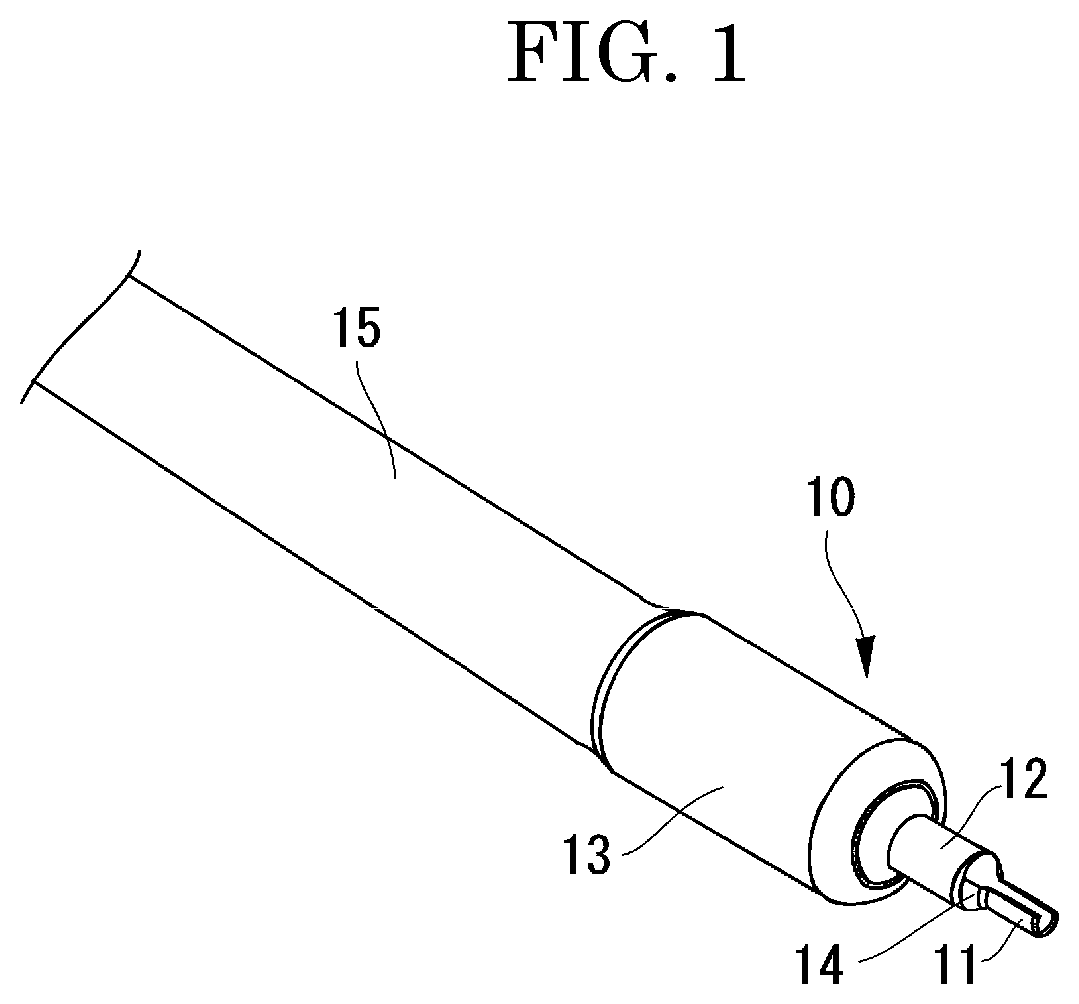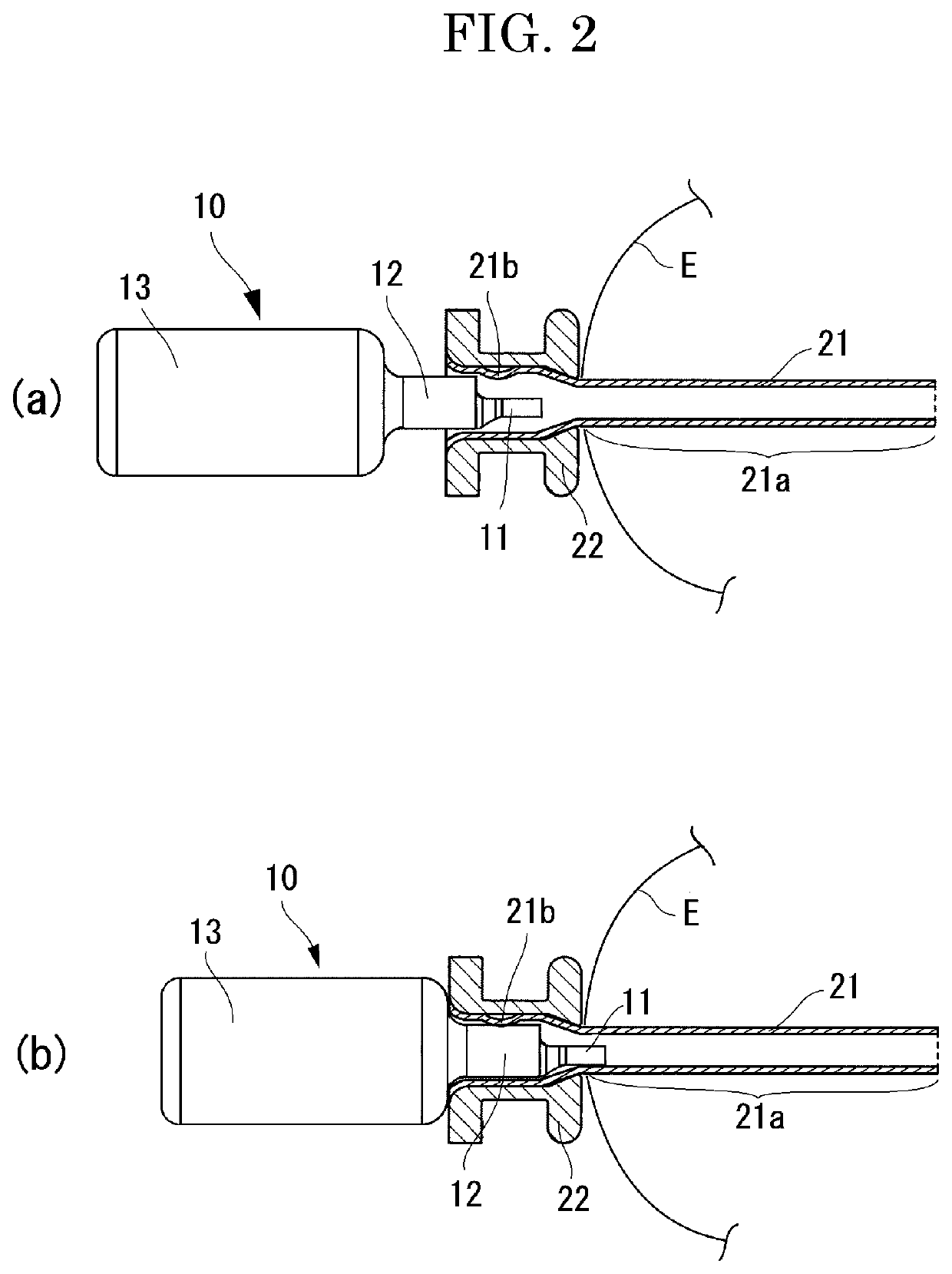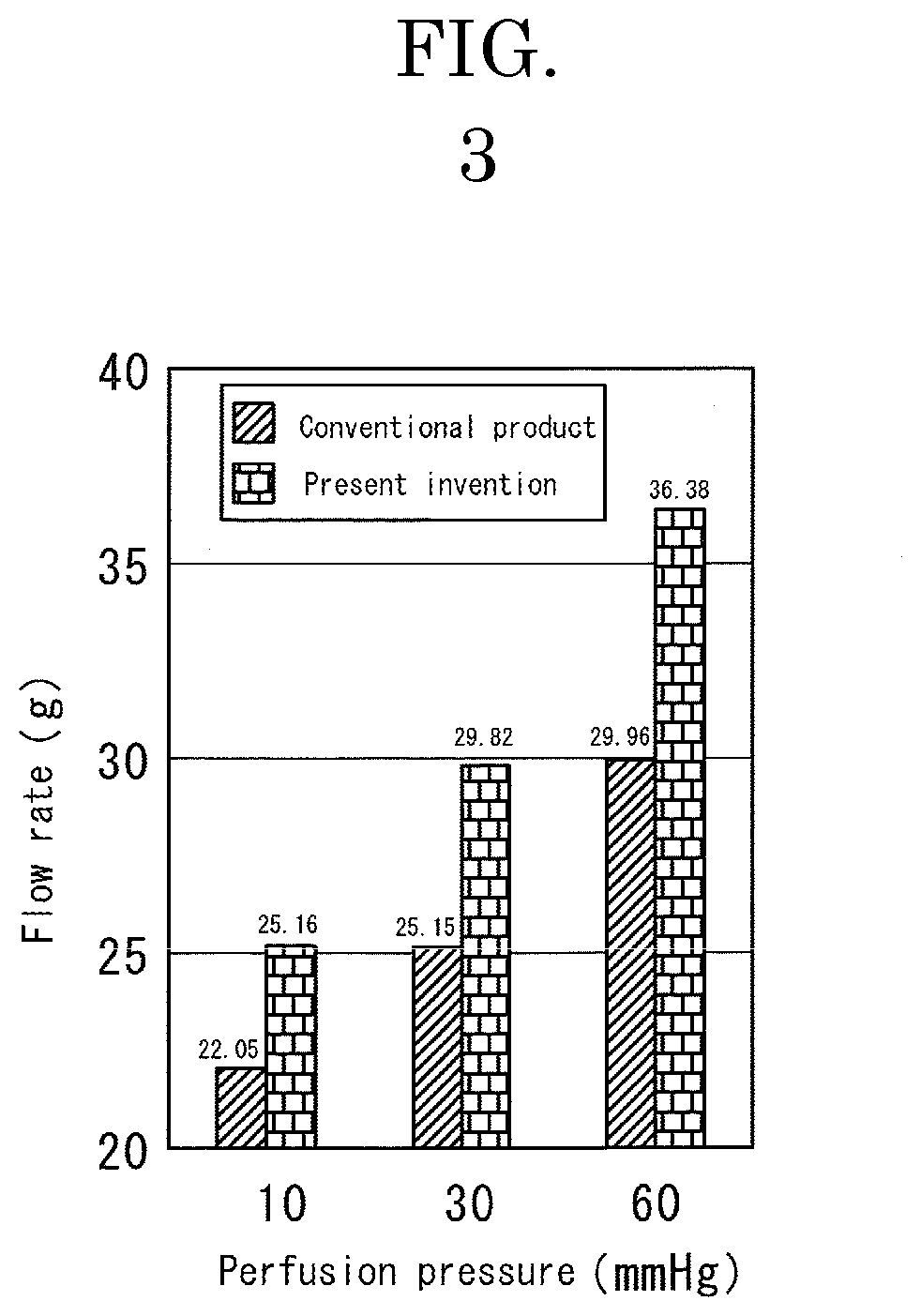Infusion pipe
- Summary
- Abstract
- Description
- Claims
- Application Information
AI Technical Summary
Benefits of technology
Problems solved by technology
Method used
Image
Examples
Embodiment Construction
[0019]An embodiment according to the present invention is described below with reference to accompanying drawings.
[0020]FIG. 1 is an oblique view of an infusion pipe of the present invention. In addition, FIG. 2 is a diagram describing joining of the infusion pipe of the present invention and a cannula, wherein FIG. 2(a) illustrates a state during the joining process and FIG. 2(b) illustrates the state after the joining process. A cannula 20 for joining an infusion pipe 10 is made by fitting a metal cannula pipe 21 into a resin cannula base 22, as with the conventional cannula. Moreover, the cannula pipe 21 has a portion fit in the cannula base 22 as a cannula joining part 21b, and a portion pierced in an eyeball E as a cannula piercing part 21a.
[0021]The basic configuration of the infusion pipe 10 similarly to the conventional pipe has an insertion part 11 to be inserted inside the cannula piercing part 21a, the joining part 12 to be pressed and secured by the cannula joining part...
PUM
 Login to View More
Login to View More Abstract
Description
Claims
Application Information
 Login to View More
Login to View More - R&D
- Intellectual Property
- Life Sciences
- Materials
- Tech Scout
- Unparalleled Data Quality
- Higher Quality Content
- 60% Fewer Hallucinations
Browse by: Latest US Patents, China's latest patents, Technical Efficacy Thesaurus, Application Domain, Technology Topic, Popular Technical Reports.
© 2025 PatSnap. All rights reserved.Legal|Privacy policy|Modern Slavery Act Transparency Statement|Sitemap|About US| Contact US: help@patsnap.com



